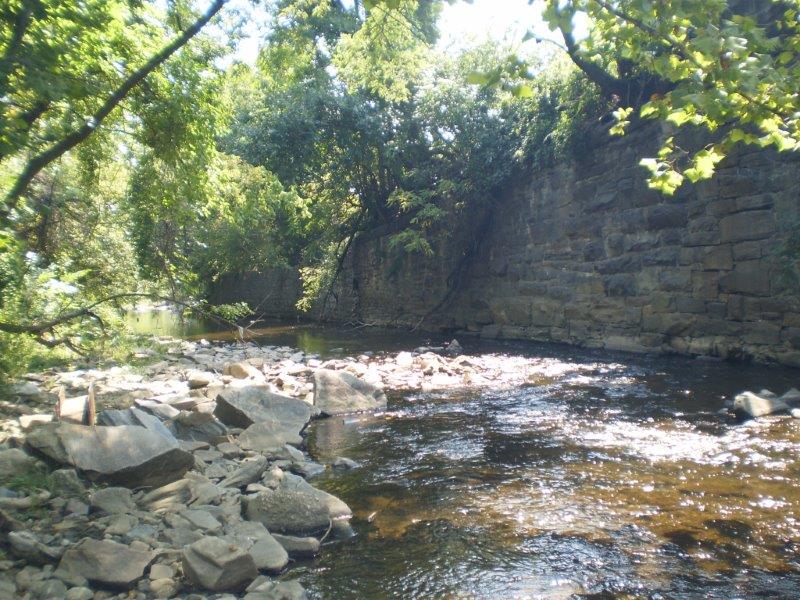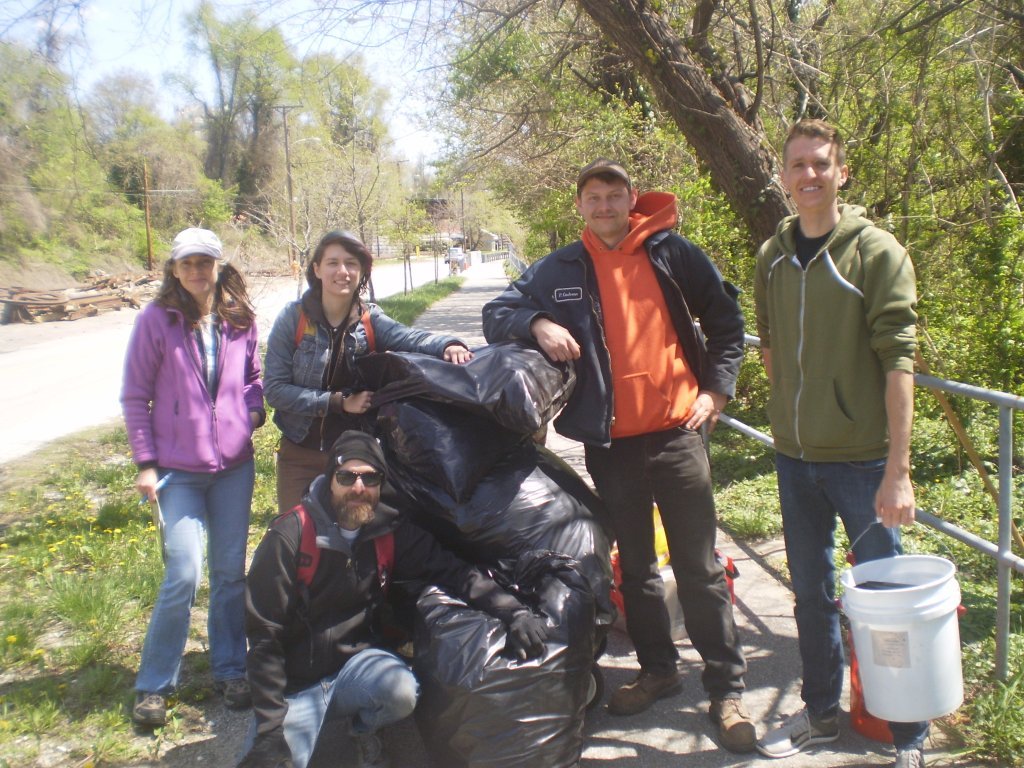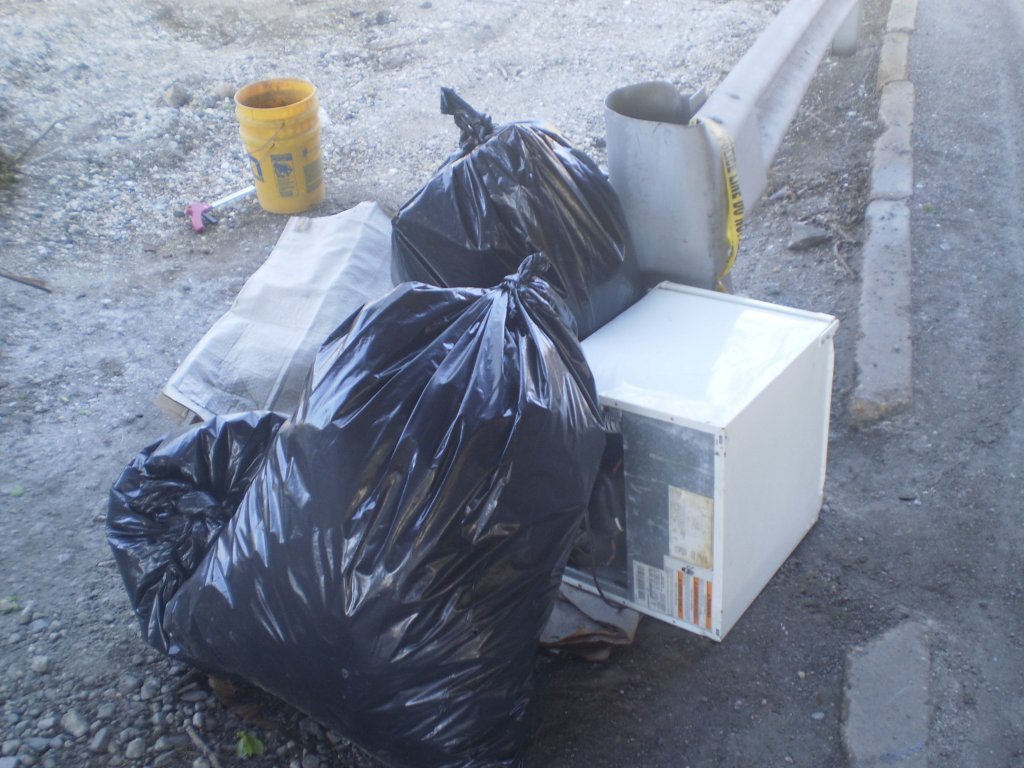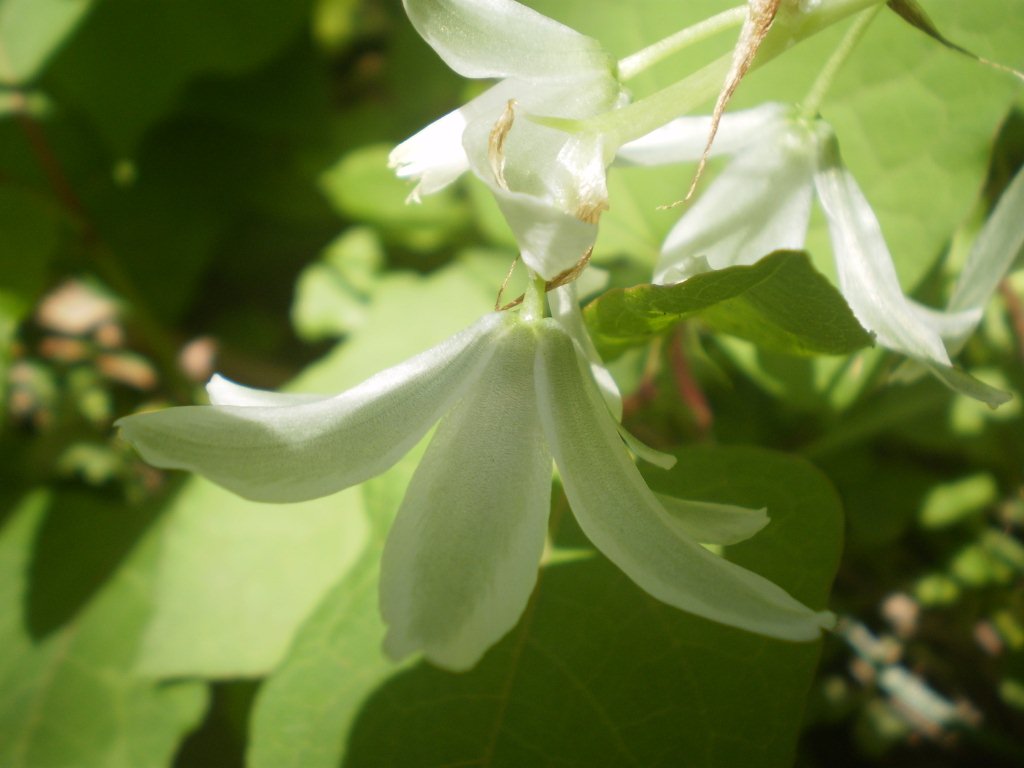Part of the 2015 Jones Falls cleanup crew, with some of the large bags of garbage collected
One of our small piles of trash, along with a discarded dorm refrigerator
On Friday April 24th, UB held its annual community service day. Each year, the University sends out teams of students and group leaders out with matching (free!) t- shirts to various sites that require volunteer support and elbow grease. I’ve been happy to lead great teams of UB students, staff and faculty (like the ones pictured above) down to the Jones Falls around the Streetcar Museum for the last six years, and we’ve pulled more garbage out of the Jones Falls and its surroundings than you can shake a stick at. Our facilities people come and take the garbage away in trucks, but have no fear, the trash has a way of replenishing itself!
This year our team cleaned up from the Howard Street bridge on up to the Ma and Pa freight station, picking up 18 industrial size garbage bags, plywood debris, a small refrigerator, paint buckets and a usable watering can . This year we were registered with Project Clean Stream , administered by Blue Water Baltimore. This project organizes and funds cleanups around the region and keeps track of the material removed – we estimated about 700 pounds of garbage from our clean up. UB sustainability coordinator Jeff LaNoue led a splinter group that liberated hundreds of trees from the clutches of invasive and nonnative English Ivy. For me, the most mind-blowing thing we found was an (unfortunately) dead river otter, apparently killed on Falls Rd. But that’s another story. I’m going to talk about trash and plenty of it, brother!
On this particular day, we found more than our fair share of everyday trash. At the end of the day, we had a discussion about the commonalities to be found among the items we picked up. Major offenders were plastic grocery bags, Styrofoam cups and take-out boxes, glass and plastic bottles, Mylar wrappers (potato chips, granola bars, etc.), aluminum cans, disposable lighters, and fast food packaging. The vast majority of these items are related to food, which provides an interesting insight. Had these items been packaged in more biodegradable material like paper we wouldn’t see as much of a problem. Moreover, if there were more places to dispose of these items properly, less trash would wind up in the stream. If there were a deposit for people to collect by turning bottles there would be less of that mess. My point is, this is a problem which can be addressed productively from a variety of angles. We have to develop the political will to insist on sustainable alternatives for packaging food, and to override special interests which dominate the current discourse.
So exactly how big of a problem is this trash, you may ask. Remember that the Jones Falls is the major tributary to the Inner Harbor, one of Baltimore’s main economic hubs. The massive amounts of trash from the Jones Falls and its watershed get washed down into the Inner Harbor via the stormwater system. The magnitude of the problem was visible on April 19th, after the first substantial rainstorm, when Mr. Trash Wheel in the Inner Harbor collected 19 tons of trash in one day or six tractor trailer loads of trash! The trash must have been building up in the streets and storm drains because this rain brought it out in droves. Putting this massive amount of waste outside the normal channels of waste collection places a huge additional burden on the city’s resources. So we can all thank Mr. Trash Wheel, but it would be much better if this trash was disposed of properly.
Since a lot of this trash is plastic or Styrofoam, it’s worth discussing some of the hazards associated with this form of waste. I and the other volunteers pulled many plastic bags off of trees, which would shatter into numerous brittle shards of plastic as we removed them. And rare was the whole Styrofoam cup, as these were often buoyant fragments and pieces that needed to be removed individually. You might think that these are degrading, and you would be correct. But just because they are falling apart doesn’t mean they leave the ecosystem entirely. In fact, evidence is piling up that the bays and oceans are filling up with tiny pieces of degraded plastic, which often resemble food items. These are readily consumed by organisms. Even though these fragments are small, they remain just as indigestible as ever and possibly even more toxic. Research is just coming in regarding the danger of these fragmentary plastics on the ecosystem, and also the pervasive nature of their distribution. And finally, many floating plastics find their way to the great garbage patches found in the oceans, where they float until they degrade into ever smaller fragments. So you can see that this regional or local issue of trash really does contribute to much bigger disturbances in the environment on the global scale. On that note I’ll end this post – too much trash talk already!
A sure sign of spring at the Jones Falls- nodding star of Bethlehem (an introduced/ invasive species but still looks nice anyway!)



